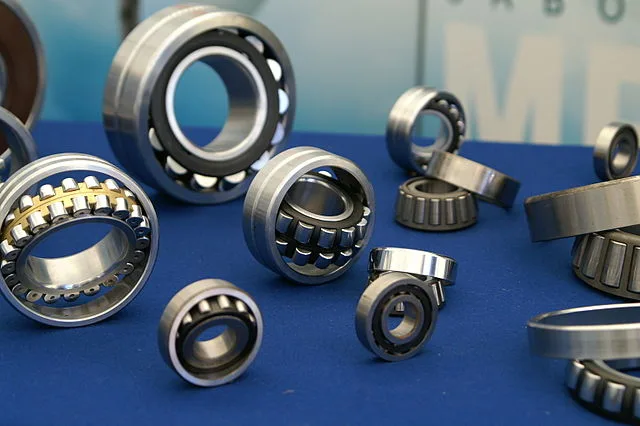Most Common Types of Bearings Used in Automobiles
When we think about what makes cars run smoothly, many of us think of engines or tires. However, bearings play a crucial yet often overlooked role in ensuring everything in your vehicle rotates as it should, from the wheels to the engine. Here’s a simple breakdown of the most common types of bearings used in automobiles, explaining what they do and why they’re important.
Ball Bearings
Ball bearings are perhaps the most widely used type in cars. Their main job is to manage both radial and thrust loads, meaning they handle forces that are perpendicular and parallel to the axis of rotation. In cars, you’ll find them in the wheels, where they help to reduce friction when the car turns. The structure of a ball bearing is simple: it consists of a ring of balls between two smooth circles called races. This design allows the wheel to spin freely, enhancing efficiency and the smoothness of your ride.
Roller Bearings
While ball bearings handle both radial and thrust loads well, roller bearings are specifically excellent at managing radial loads. They’re similar to ball bearings but use cylindrical rollers instead of balls. This shape allows for a larger contact area, which can carry heavier loads. Roller bearings are commonly used in parts of the car that bear heavy loads, such as transmission systems and under the hood in the engine area.
Tapered Roller Bearings
These are a type of roller bearing that can handle both large radial and thrust loads, making them incredibly useful for parts of a car that undergo extreme stress. Their unique feature is the tapered shape of the rollers, which aligns them in a way that supports both types of loads efficiently. You will typically find tapered roller bearings in the wheel hubs, transmissions, and differentials of cars.
Needle Roller Bearings
These bearings are named for their slender and long rollers, resembling needles. Because of their small diameter, they fit into tight spaces where standard roller bearings won’t go. This makes them perfect for parts of the car with limited space but high requirements for load-bearing, such as the gearbox or the clutch.
Spherical Roller Bearings
Spherical roller bearings are ideal for applications that involve severe misalignment issues, heavy loads, and impacts, which are not uncommon in car suspensions. These bearings can handle all types of loads and, thanks to their spherical shape, are adept at adjusting to alignment errors. They ensure that performance stays consistent and reliable, even when the car drives over rough or uneven surfaces.
Thrust Bearings
Thrust bearings are designed specifically for handling high axial loads. In a car, these bearings are essential for components that experience a lot of forward and backward forces, such as in transmissions and steering columns. They help maintain stability and smoothness in these crucial systems.
Each type of bearing has a specific role that contributes significantly to the vehicle’s overall functionality and the driver’s comfort. By reducing friction and handling loads efficiently, they ensure that your car not only drives more smoothly but also lasts longer. Understanding these basics helps you appreciate how much work goes into even the smallest parts of your vehicle.



